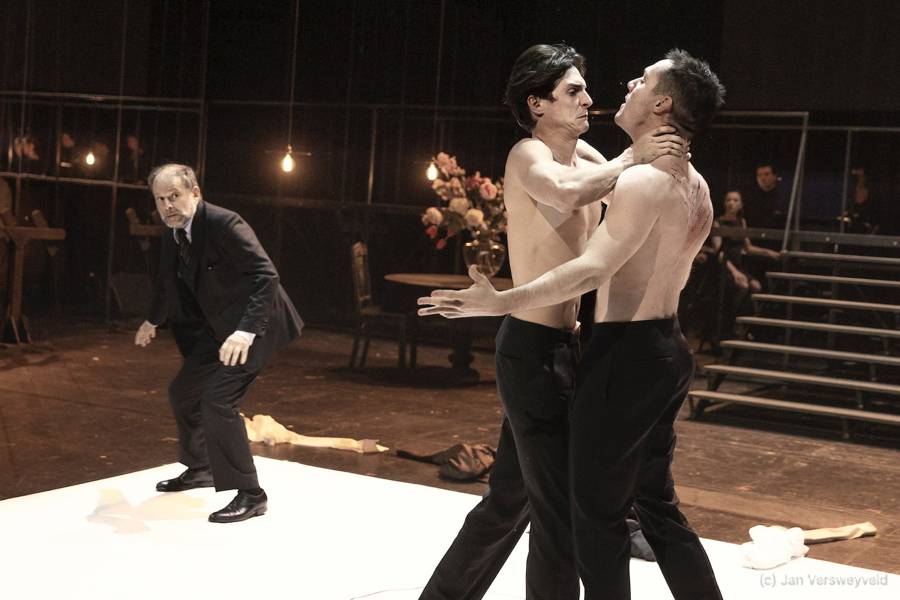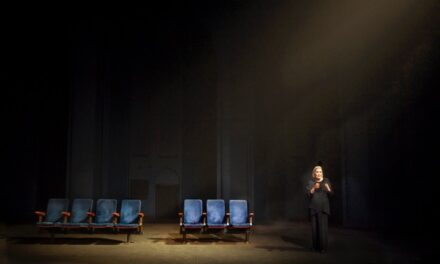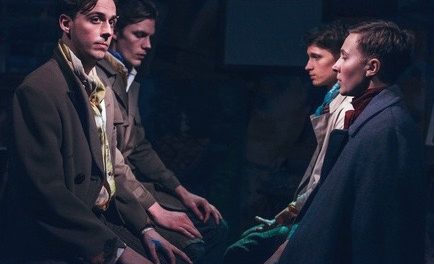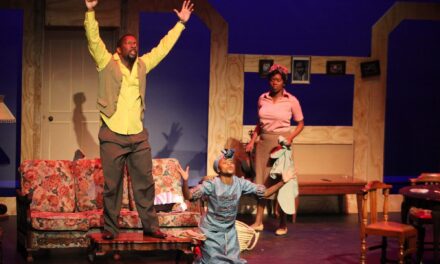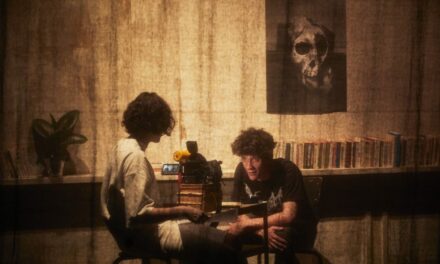One of the most popular dishes in French cuisine is tartare. Diced beef with egg yolk and lots of spices that are meant to sanitize the raw meat and give it flavor. Raw truths, too, have to be sanitized to get them to the audience. Otherwise, it will refuse to swallow them. The author of Tartuffe, whose 400th anniversary last year celebrated the entire theatre world, having composed his famous Tartuffe was forced to rewrite it twice. The first version of the play, consisting of three acts, was banned immediately after the 1664 premiere. The 1669 version, the most famous and often played on the stage, gained two additional acts and lost the fury and satirical denunciatory pathos of the first production. This is the conventional wisdom. And thanks to the literary archaeology undertaken by Georges Forestier, theatre historian, with the participation of d’Isabelle Grellet, the public has had the opportunity to touch the very first version of Molière’s text, becoming spectators of Ivo van Hove’s performance at the Comédie Française, Molière’s home. Of course, this is not quite the original play, but a version inspired by the final passages, sketches, and plan of the play. Still, it is a curious theatre experience. The dish of high theatre cuisine is characterized by beautiful presentation and thoughtful garnish, but it lacks spices, spiciness, and sharpness. However, as the recipes say – salt and pepper to taste.
The Comédie Française’s tour was a bright chord of the MITEM 10th anniversary festival in Budapest. So much attention was paid to them that the play Tartuffe or the Hypocrite was performed twice with a full house. Ivo van Hove’s play can be called fashionable without belittling its artistic merits – its film version has been seen in the cinemas of many countries around the world. Ivo van Hove’s Tartuffe, like his other plays, is cinematic and built largely on external effects. Here real fire and water, naked bodies, and loud screams fight for the audience’s attention. The flair of the forbidden (the forbidden version of the play) is combined here with the “forbidden fruit” – explicit and rather carnal scenes of seduction. Framed in dark tones and illuminated by light reminiscent of the twilight of a chapel or the darkness of the underworld (superb scenography by Jean Versweyveld), the performance, with a mesmerizing soundtrack by Alexandre Desplat, takes on the characteristics of ritual and sacred action, gradually abandoning them in favor of worldly vanity and bright colors.
The play begins with the ritual of washing Tartuffe, who has been found in a pile of rags and is undressed, bathed, and dressed on stage by candlelight. The mise-en-scene is designed as a baptismal ritual and impresses with the precision of the movements and the beauty of orderliness. The empty stage is gradually and intensively filled with objects and furnishings, details, and people. There is not a single superfluous movement. Everything is calibrated and embodied with surgical precision. Rituals of exorcism, prayers, and funeral rites appear in the performance. Faith is substituted for ritual in the performance, as it often happens offstage. Subtly, delicately, but convincingly, the director introduces the theme of imaginary faith and the institution of religion, into the play, which has replaced the sacrament of man’s appeal to higher powers.
Another aspect of the performance, in which the theatre becomes like a temple, is the act of creation. It is the creation of the artist, not the Creator. On the black stage, there is a white cloth, like a blank sheet of paper, on which the main dialogues of the play unfold. In the finale, this white sheet will turn into a shroud, and the flowers in the vases arranged to create the interior will turn out to be the flowers on the grave of Madame Pernelle (Claude Mathieu). Together with her, the play will symbolically bury the old world and old morals. But before that, people in black suits on a white sheet of paper write themselves a story about an authoritarian subject who subjugated a family of educated, wealthy, intelligent people who voluntarily let a petty tyrant into their home. Certain mise-en-scenes of the performance remind us of Luchino Visconti’s movie canvases, exploring in beautiful interiors the seeds of fascism, which strikes hearts and souls, as well as spiritual slavery. As with Visconti, van Hove (who drew on Visconti’s films in his work) also deals with the disintegration of the family and the breakdown of morals.
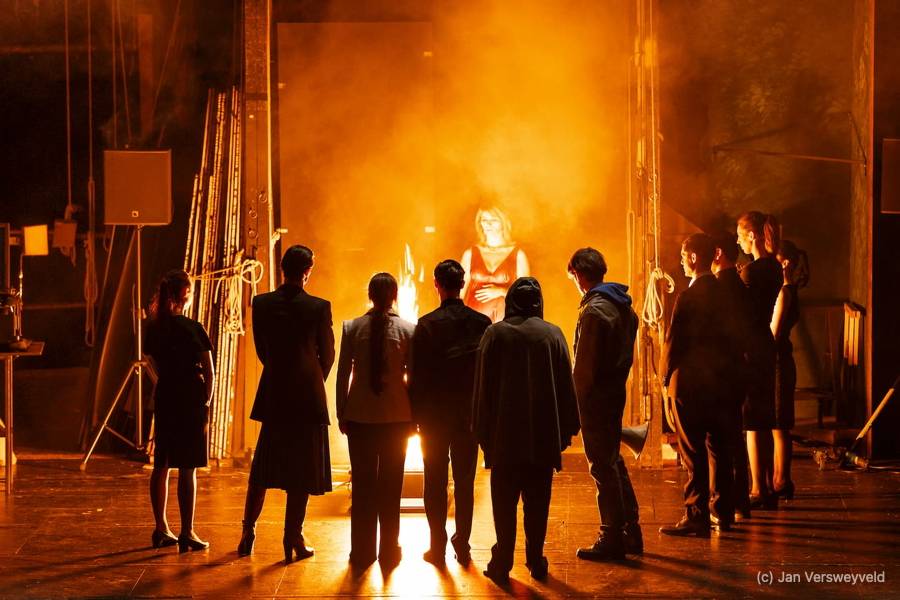
Photo courtesy of the MITEM Official press release site
Tartuffe is here a social collective image of a puny creature who has achieved a semblance of power, stupefying the intellectuals who are self-reflective and mired in the conventions of society. He is a likeness of Little Zaches, nicknamed Zinnober from the satirical fairytale fantasy novella by E. T. A. Hoffmann. Tartuffe here is also a superb actor (as is Christophe Montenez in this role, for he wears a mask – a mask of sainthood). It seems that he is not a deceiver, but an artist who sincerely believes in his role. It seems that he sometimes sincerely, not pretending to believe in his interpretation of canonical dogmas.
Like Molière, the director of the current interpretation of Tartuffe does not oppose faith as such but resists fanaticism and sanctimony. As soon as the imaginary saint in the play (Orgon – played by Denis Podalydès) leaves the house, colors and informality appear as the actors change out of their constrictive gloomy suits and put on hoodies and brightly colored dresses. Some will say freedom and independence, others will say disorder and disorderliness. Ivo van Hove does not offer a one-dimensional view of the play. The finale of Tartuffe is ambiguous – with the disappearance of the protagonist, on the one hand, there is relief, on the other hand, however, there is chaos. A play of strictly honed form is suddenly stripped of it. The spine of faith in the beginning was the backbone of this house and kept it it austere and beautiful. In the finale of the play, where the characters change costumes, and some even change gender or orientation, it seems to a certain part of the audience that the Orgon family has lost its bearings and moral principles with the disappearance of Tartuffe. But judging by the smiles, laughter, and looseness of the characters, who were previously confined within the framework of the cold mise-en-scène, they are doing fine. Gone is the fear – gone are the boundaries, and it’s up to the audience’s perception, their moral code, to decide how to best to treat it.
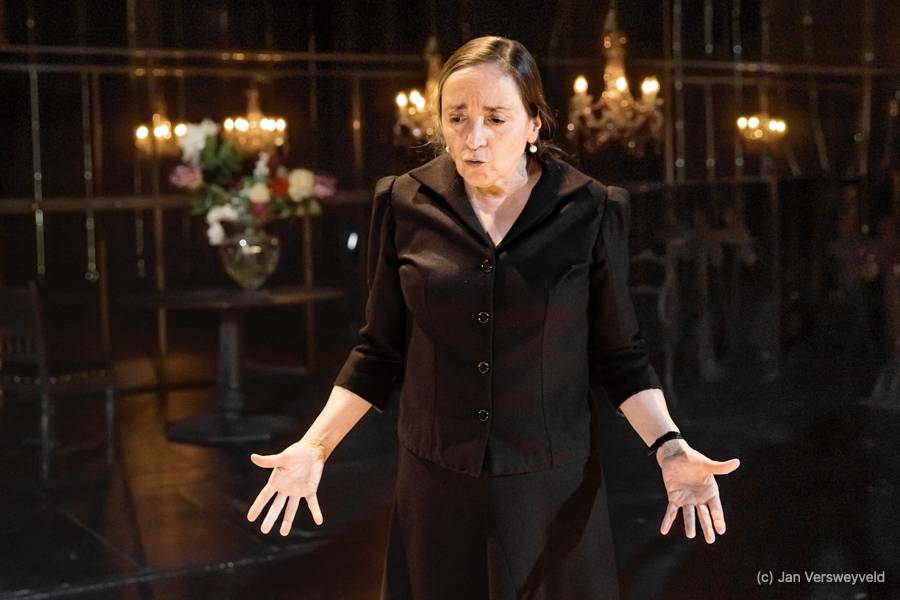
Photo courtesy of the MITEM Official press release site
man?” or “Who is setting a trap for whom?” The answers to these and other questions in the darkness of the auditorium must be found by each of the spectators themselves. The play, with the exception of the contemplative, ritualistic inserts (if you take them out of the play, the plot will not be disturbed) is a traditional reading, but its value lies in the fact that it has filled the conversations about faith, soul and sin with an expressive physicality that does not, however, go beyond the limits of good taste.
And yet it is also a comedy. In van Hove’s performance, there are many playful moments and gags, to which the audience reacts with pleasure, finding fleeting rays of light within the realms of this dark kingdom. Unlike the characters, the audience is not forbidden to laugh and express their feelings. The play reminds us of the goodness of our inner freedom, which we have grown accustomed to and sometimes forget to appreciate.
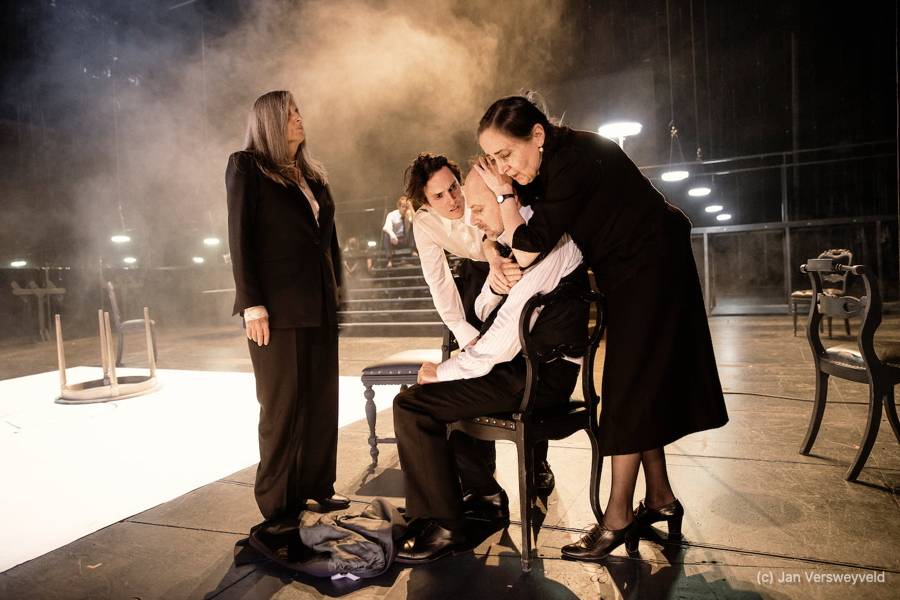
Photo courtesy of the MITEM Official press release site
For all the sketchy allusions and references to serious and controversial topics, van Hove’s play is devoid of pamphleteering and social pathos. He does not denounce but tells a story. And this story is very bourgeois and easy to understand and does not hurt the feelings of believers. It is a theatrical dish, performed without intermission, the discussion of which is pleasant to continue in a restaurant over a culinary dish. Ensemble, stylish, and full of external effects, the performance turns out to be easily digestible and devoid of profound experiences and experimental directorial solutions. From the first fragments (frames – because van Hove’s style implies cinema on stage), the performance promises a bright and sharp theatrical experience, but it turns out to be a traditional, albeit shortened and (outwardly) modernized version of Tartuffe, where morality does not triumph, but man triumphs, not knowing whether he has won or lost. There is no director’s wit here, but Moliere’s wit remains. This theatrical dish is worth tasting, but you will hardly want to try it a second time. The great thing about the MITEM festival, however, is that it offers its audience performances of various forms and genres, including everything but boredom!
https://mitem.hu/program/eloadasok/tartuffe-avagy-a-kepmutato
This post was written by the author in their personal capacity.The opinions expressed in this article are the author’s own and do not reflect the view of The Theatre Times, their staff or collaborators.
This post was written by Emiliia Dementsova.
The views expressed here belong to the author and do not necessarily reflect our views and opinions.

